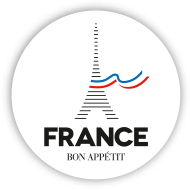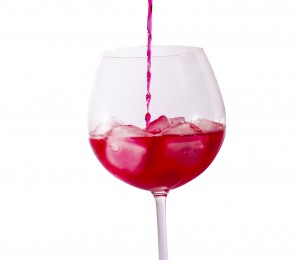
THE FRENCH
FOOD
INDUSTRY'S PORTAL
Webzine
taste it to info

Wine on ice embodies a growing trend
News /
Wednesday 21 October 2015
The concept of wine served on ice was launched in the early 2000’s by Vinovalie and is now a major trend in France. It is also starting to cause a stir on export markets.
 The story of “wine on ice” began in 2004, when south-west French co-operative Vinovalie launched its “Rosé Piscine” brand on the French market, which translates as “swimming pool rosé”. At the time, the new concept was both intriguing and divisive. And the reason for this is quite simple: the traditional codes of wine consumption have been shaken up. “Wine on ice” is effectively a wine to which we add ice. Today, Rosé Piscine has been the inspiration for many other brands and France has become a dynamic market for the “wine on ice” segment. Literally dozens of brands now adopt this concept for red, rosé, white and sparkling wines.
The story of “wine on ice” began in 2004, when south-west French co-operative Vinovalie launched its “Rosé Piscine” brand on the French market, which translates as “swimming pool rosé”. At the time, the new concept was both intriguing and divisive. And the reason for this is quite simple: the traditional codes of wine consumption have been shaken up. “Wine on ice” is effectively a wine to which we add ice. Today, Rosé Piscine has been the inspiration for many other brands and France has become a dynamic market for the “wine on ice” segment. Literally dozens of brands now adopt this concept for red, rosé, white and sparkling wines.
Vinovalie, a pioneering force on the market
This new way of drinking wine was down to one man, Jacques Tranier, Director of Cave de Rabastens, in the Tarn area of France. At the time, a seemingly everyday event was to prove a catalyst for the birth of Rosé Piscine.
Interestingly not a pool-side episode, he found himself instead in a bar on the Côte d’Azur, where the idea started. That particular night, Jacques Tranier watched two people drinking a glass of rosé with copious amounts of ice. His professional curiosity led him to follow suit and order the same as they were having. While the managing Director of Vinovalie deemed the drink too flat to be consumed as it was, the sense of freshness released by the ice left a lasting impression. To give additional body to the wine he found so flat, he worked with a number of winemakers to come up with a wine in 2005 that would be subsequently known as “Rosé Piscine”.
Being a wine grower himslef, this new wine came with its own definitively innovative concept. “At the beginning of the year 2000, we realised that the younger generation was drinking progressively less wine, while new low-alcohol mixes were all the rage. Rather than subscribe to the dogma of wine as manifested by our grandparents, we instead asked ourselves how consumption has evolved. While in the past we may have spent hours around the dinner table, today we eat on the go. We needed to tailor our offer to meet these new drinking trends.” The concept of Rosé Piscine was immediately translated into a brand in order to sell the product. Since 2005, sales of this “iced” wine have met with huge success. Jacques Tranier explains: “The best way to engage with the new generation was to admit that you can break the traditional codes of consumption, and it is possible to add ice to a glass of wine without feeling guilty. Now that the idea has taken root, it is slowly starting to grow as a concept”.
Exports in constant growth
This said, it is important to differentiate between “wine on ice” and the flavoured wines found on the market, such as wines enhanced with grapefruit or orange. “It is as a result of innovation, technique and research and development into the concept that we have configured the sensorial profile of Rosé Piscine. It is very much a natural wine” stipulates Jacques Tranier. “We made the decision to avoid any flavouring”. While success may be slow in France, over the last year exports have made a huge leap in the right direction. The strategy adopted by Vinovalie, which stems in fact from a love of wine and rugby, is rooted in targeting markets where conviviality, socialising and celebrations play an important role in society. Brazil, quite logically, is the most dynamic market in terms of international sales, notching up sales of 100,000 bottles last year, from a global production of a million bottles. “We launched just at the start of the Football World Cup. It was an immediate success. Consumers taste and enjoy Rosé Piscine in Copacabana. This is the country where we have invested heavily and we are now seeing really great results, especially in Brazilian bars.” Jacques Tranier explains. Next stop the US, exporting a more extensive range of wines, since the “Rosé Piscine Freezente” sparkling wine is already present on the market. The mid-term objective would be for exports to account for 30% of sales, which is approximately, double the current figures.
“A group is stronger than the strongest in the group”. And it is this very philosophy that has formed the cornerstone of Vinovalie, the cohesion of four cooperatives in the Pays d’Ovalie: Vignerons de Rabastens, Cave de Técou (Tarn), Cave de Fronton (Haute-Garonne), and Côtes d’Olt in the Lot. The impressive success of this cooperative just goes to prove that it is possible to succeed through innovation in the wine sector.






